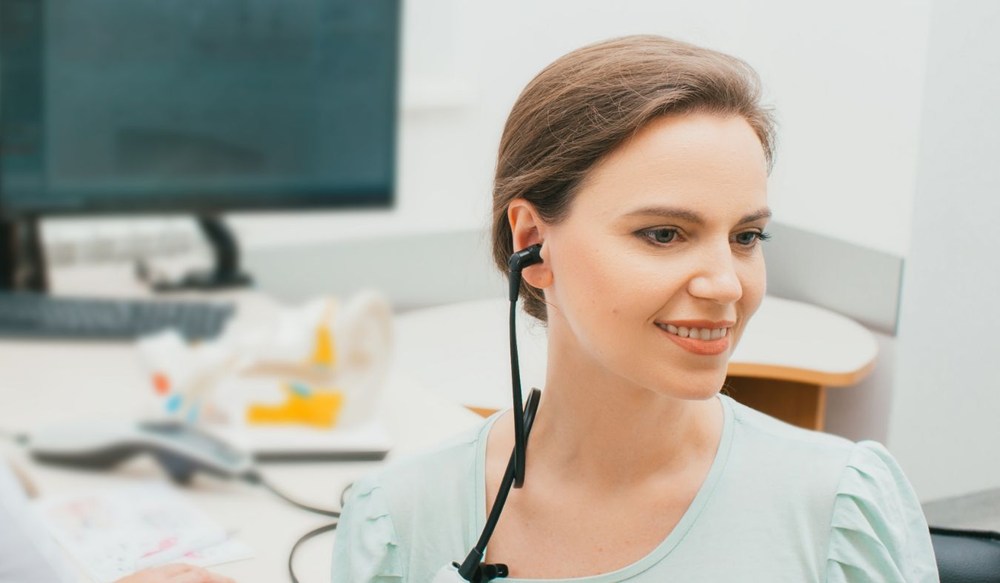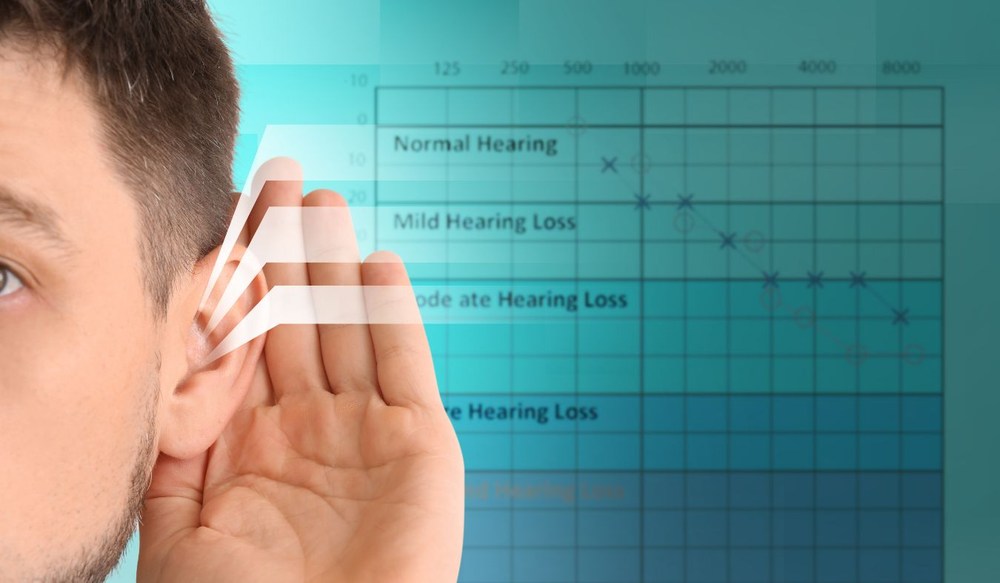How to Advocate for Yourself During a Hearing Test
A hearing test isn’t just something that happens to you while you

By: admin | June 20, 2025
When you find yourself asking people to repeat themselves more frequently or having trouble hearing your phone ring from another room, you might wonder if your hearing has changed. There are several ways to check on your hearing health, from quick online screenings you can do on your phone to comprehensive testing at an audiologist’s office. At-home hearing test kits have become increasingly popular as a convenient way to get some initial information about your hearing without scheduling an appointment or leaving your house.
While these at-home options can’t replace the thorough evaluation you’d get from an audiologist, they may serve a useful purpose in helping you decide whether it’s time to seek professional care. The key is understanding what these tests can and cannot tell you about your hearing health. A hearing evaluation with an audiologist uses specialized equipment and controlled environments to provide accurate, detailed information about your specific hearing needs. At-home tests, on the other hand, might give you a general sense of whether you’re experiencing hearing difficulties, but they have limitations that could affect their reliability and usefulness in determining your actual hearing status or treatment needs.
Hearing loss often starts with small changes that are easy to brush off. You might catch yourself asking people to repeat things more often, or you may find group conversations harder to follow, especially in busy places. The television might seem quiet even when others say it’s loud. Sometimes, it’s not that sounds are missing entirely, but that they’re just less clear. It can feel like everyone is mumbling or that you’re constantly a step behind in conversations. These day-to-day frustrations are often some of the earliest clues that something has shifted.
What makes these signs tricky is how gradually they can creep in. You may start avoiding phone calls or social settings without realizing it’s because listening has become more tiring. Or you might chalk up mishearing things to distraction or age, when in fact your ears aren’t picking up sound the same way they used to. The earlier you recognize these shifts, the easier it is to figure out what’s going on and get help that fits your needs. Your specialist can guide you through this process with clear testing and honest discussion, helping you understand what you’re experiencing and what steps to take next.
Home-based hearing tests have become more common in recent years, mostly because of how convenient they are. For many people, the idea of testing their hearing without having to schedule an appointment or leave the house feels less overwhelming. These tests are easy to access online or through mobile apps, and they can give a quick sense of whether something might be off. If you’re just starting to notice issues like trouble following conversations or needing the volume louder than usual, a home test can feel like a low-pressure first step.
Some people also use home hearing tests because they want to get a better sense of their hearing before committing to a professional evaluation. It can be helpful to see some initial results that confirm your suspicions or give you something concrete to bring to your appointment. In some cases, these tests may be used to check on your hearing between visits, especially if you’re already using hearing aids and want to track changes over time.
While these tools can be useful, it’s important to remember they aren’t a replacement for a full hearing evaluation. An audiologist uses specialized equipment in a sound-treated environment and can give you a much clearer picture of what’s going on, including the type and extent of hearing loss and what options might help. Still, for many people, home tests are a helpful way to start paying closer attention to their hearing and take the first step toward getting the support they need.
Home kits use a range of sounds and tones to measure your ability to hear at different frequencies. The process is simple. You listen to a variety of sounds, usually through headphones and respond when you hear them. This enables the kit to identify your hearing threshold, which is the faintest sound you can hear at different frequencies.
Most kits use an app or website to guide you through the process, and some will ask for information like your age or gender to help tailor the test. You’ll often start by checking your environment to make sure it’s quiet enough for testing. Once the test begins, you’ll hear a series of beeps or tones in one ear at a time, and you’ll either tap a button or indicate in the app when you hear each sound. Some versions also include speech-based tasks, where you’re asked to repeat or select words or numbers that are played back at different volumes. After the test, you’ll typically get a basic breakdown of your hearing results, often in the form of a simple graph or summary.
An accurate test should have clear instructions, ensuring you can conduct the test correctly without any confusion. Along with easy-to-follow guidelines, a dependable home hearing test will provide immediate results that are easy to understand. Consider kits that come with professional support, having access to an audiologist for questions or concerns adds an extra layer of reliability. Even with these features, it’s crucial to understand that even the best home tests cannot substitute the comprehensive evaluation provided by an audiologist during an in-person consultation.
One of the most common ways home hearing test kits measure your hearing is through a method called pure-tone audiometry. It plays tones at different pitches and volumes to find the quietest sounds you can hear, helping to map out your hearing ability.
The test sounds used in these kits are calibrated to specific decibel levels and frequencies, mimicking the range of human speech. When you respond to these sounds during the test, it helps sketch out your individual ‘audiogram,’ or a graphical representation of your hearing ability across different sound parameters.
However, while this technology can provide an initial insight into your hearing health, it’s not foolproof. Variables like background noise or incorrect use can impact results. That’s why it’s important to see home-based tests as a first step in understanding your hearing health rather than a comprehensive evaluation. For a detailed understanding and a treatment plan tailored specifically for you, consulting with a specialist is essential.
Despite their convenience and privacy, at-home hearing tests have limitations and are not designed for everyone. One significant limitation is their inability to diagnose specific types of hearing loss or recommend personalized treatment plans. These kits offer a general overview of your hearing ability but lack the capacity to identify nuanced differences in hearing loss types. For instance, they can’t differentiate between sensorineural and conductive hearing loss, two very different issues requiring distinct treatment approaches.
Environmental factors can considerably affect the accuracy of these tests. Background noise or poor sound quality from your device can distort results, potentially leading to misleading conclusions about your hearing health. The absence of professional guidance during testing is another challenge. While most kits aim for user-friendly instructions, misunderstandings can occur, which might lead to incorrect test administration and subsequently inaccurate results.
After taking a home hearing test, you might wonder what the results mean. Your results will show a range of frequencies and volumes. Each of these represents different aspects of your hearing ability. The higher the frequency, the higher-pitched the sound is. Volume refers to how loud or soft a sound is.
Lower numbers in certain areas suggest that your hearing ability at those particular frequencies or volumes might not be as strong as it should be. But this doesn’t necessarily mean there’s a problem with your hearing health! These tests are designed to provide a broad idea about your auditory abilities and are not diagnostic tools.
Remember, home tests can sometimes provide inaccurate results due to factors like background noise or improper use of the kit. The important thing to remember with these tests is if they do indicate hearing loss, you should follow up with an audiologist to have a professional assessment.
After taking a home hearing test, it’s time to consider the next steps. If your home examination results suggest potential issues with your hearing abilities, it’s important to book an appointment with a specialist as soon as possible.
Home examinations can provide a preliminary overview of your auditory capabilities, but remember, they are not capable of diagnosing specific types of hearing loss or suggesting personalized treatment plans. For this reason, even if you feel there may be no immediate concerns based on your home test results, regular check-ups with an audiologist are still essential for maintaining optimal auditory wellness.
An audiologist has the necessary training and tools to conduct comprehensive evaluations and create tailored treatment plans that best suit your individual needs. They can also help clarify any confusion or concerns regarding your home test outcomes and guide you through the process of understanding and managing your hearing health.
Even if you take an at-home test and the results indicate hearing within a normal range, you should still visit a professional if something feels off. Hearing loss is so gradual that you may not realize you have the beginning symptoms of it; and the sooner you seek treatment, the better the outcome.
Hearing aids are the most common treatment for hearing loss, and they’ve come a long way in terms of both comfort and performance. There are several styles to choose from, including behind the ear (BTE), in the ear (ITE) and completely in canal (CIC) devices. Each offers different advantages depending on your hearing needs, ear shape and personal preferences. Your audiologist will walk you through these options and help you decide what makes the most sense for your everyday life.
Beyond the shape and fit, hearing aids also vary in features. Some automatically adjust volume based on your environment, while others include directional microphones, noise reduction or Bluetooth for streaming audio from your phone or TV. Your audiologist can fine tune these settings based on your specific hearing loss, making sure you get the support you need where it matters most. It’s not just about making things louder. It’s about helping you hear clearly and comfortably in the situations you care about.
Using an at-home hearing test can be a helpful first step if you’re unsure whether you’re noticing real changes or just having an off day. It gives you a chance to check in on your hearing in a familiar setting and start thinking more seriously about your hearing health. But once you’ve done that, the next move is often the most important. A full evaluation with an audiologist gives you real answers, not just estimates and helps you understand what’s really going on.
If your at-home test raises any concerns, or even if you just want peace of mind, we’re here to help. At Hearing Wellness Centre in Windsor, ON, our team is ready to guide you through a full evaluation and answer any questions you have along the way. Call us at (844) 663-9433 to schedule an appointment and take the next step toward hearing more clearly and confidently.
Tags: audiogram, faqs, speech tests

A hearing test isn’t just something that happens to you while you
By: admin | October 20, 2025

Summer is a time for outdoor barbecues, beach trips and long walks in the
By: admin | July 29, 2025

When you find yourself asking people to repeat themselves more frequently
By: admin | June 20, 2025
